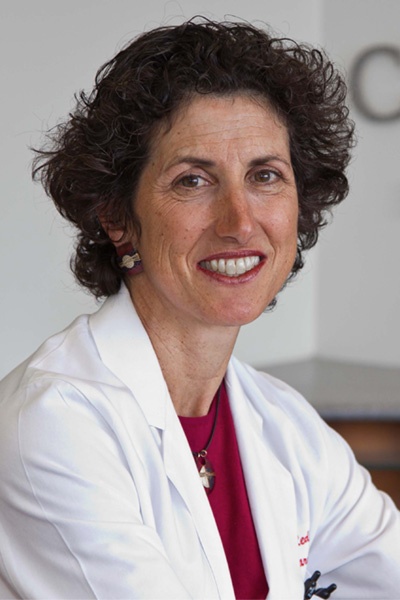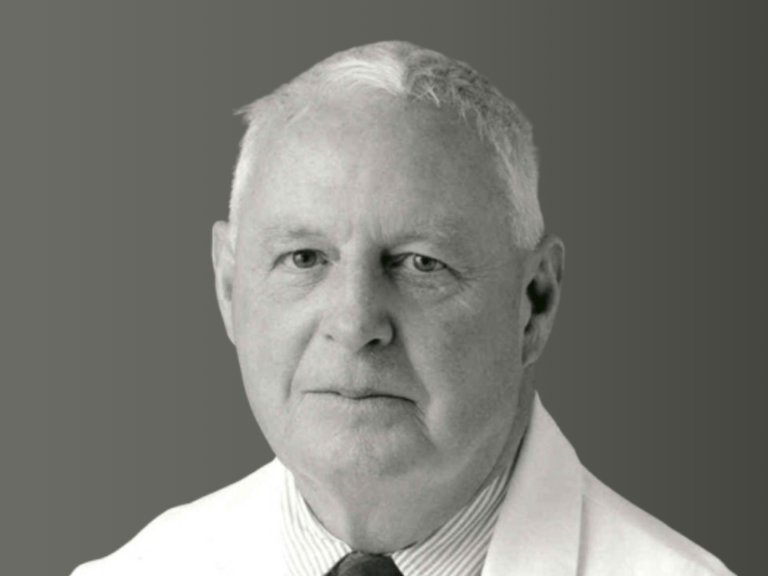A recent proposal to delay reporting of device malfunctions to FDA will weaken the already inadequate medical device reporting system at the agency, said Rita Redberg, a professor of medicine and cardiologist at the University of California San Francisco.
Redberg, editor of JAMA Internal Medicine, has been studying adverse event reporting and medical device surveillance issues for over a decade. She often opines on recommendations of U.S. Preventive Services Task Force, and in 2014, as chair of an advisory committee for the Centers for Medicare and Medicaid Services, Redberg presided over the panel that expressed low confidence in low-dose CT screening for lung cancer (The Cancer Letter, May 9, 2014).
In a recent JAMA article titled, “Power Morcellators, Postmarketing Surveillance and the U.S. Food and Drug Administration,” Redberg makes a case for a more robust device surveillance system—citing The Cancer Letter’s coverage of the controversy over power morcellation.
“The issues and weaknesses in our device surveillance, I think, are well illustrated in power morcellation, although certainly not limited to it,” Redberg said to The Cancer Letter. “We know adverse events are underreported to a staggering degree.
“It’s estimated somewhere between three percent and seven percent of all adverse events get reported. And then, when they do get reported, actions based on those from the FDA and from clinicians can be very slow.”
In the latest 2017 draft of the Medical Device User Fee Amendments—which, like the PDUFA, is renegotiated every five years—device manufacturers would be allowed to report malfunctions on a quarterly basis, instead of within the current 30-day limit. While this provision already exists for some devices, the new MDUFA would allow FDA to consider industry’s proposed list of devices for exemption from the 30-day requirement.
The House has reauthorized the new agreement, and it now awaits Senate approval.
“FDA just said that they just relaxed the adverse event reporting requirement for industry and changed them from monthly reports to quarterly reports for “device malfunctions” which are adverse events, although not for adverse events involving patient injury or death,” Redberg said. “I think the proposal should be tossed.
“The problem is that device malfunctions often lead to patient injury or death and this will slow down the already slow recognition of malfunction problems and lead to increased avoidable injury and deaths.”
In February, a report by the Government Accountability Office stated that, in addition to underreporting, adverse event reports to FDA can be incomplete or erroneous, and are not timely (The Cancer Letter, Feb. 24). This is consistent with a December 2015 inspection of 17 hospitals by FDA that found the vast majority of those hospitals did not file timely reports of injuries and deaths caused by medical devices (The Cancer Letter, Dec. 16, 2016).
The problem is that device malfunctions often lead to patient injury or death and this will slow down the already slow recognition of malfunction problems and lead to increased avoidable injury and deaths.
“I think physicians are in the best position to report,” Redberg said. Currently, only device manufacturers and user facilities are required to notify FDA of suspected device-associated deaths, serious injuries and malfunctions.
A bill to require individual physicians to report adverse events—the Medical Device Guardians Act—was introduced in the House in 2016, but the measure wasn’t folded into the 21st Century Cures Act (The Cancer Letter, June 10).
“The idea that it would increase reporting, and that physicians would report, I think is really important,” Redberg said. “We should have a change in culture, where anyone who observes an adverse event—physicians, nurses, institutions, patients—have an easy and accessible method of adverse event reporting, facilitated by electronic medical records and unique device identifiers.
“That adverse event data should be public, available and accessible, and the FDA should be reviewing it, at least monthly, to pick up safety signals.”
Redberg spoke with Matthew Ong, a reporter with The Cancer Letter.
Matthew Ong: How long have you been working on medical device reporting and surveillance? What is of utmost priority to you, as a physician, in this area?
Rita Redberg: I’ve been looking at medical device surveillance for more than 10 years now.
As a physician, particularly as a cardiologist, I’m interested in looking at why we’ve spent so much money on health care in the United States, yet our health measures are not nearly as good as countries that spend a lot less than we do, and we don’t have universal coverage as most other countries do. And I think technology and devices play a big role in that.
So, I’m interested in looking at devices for that reason as well.
Your recent JAMA article makes a case for a more robust postmarket surveillance system, which happens to be an issue that The Cancer Letter has covered extensively. Why was power morcellation the topic of choice?
RR: It certainly has been in the news a lot recently. And the issues and weaknesses in our device surveillance, I think, are well illustrated in power morcellation, although certainly not limited to it.
Could you summarize your take on the issue of postmarket surveillance as you did in the journal and explain why it should be the focus right now?
RR: Right. I think postmarket surveillance is incredibly important for devices, particularly high risk devices, like power morcellators and certainly devices that are implanted in patients. Most devices enter the market based on limited pre-approval data. So, there are often no clinical trials if they got onto the market through the 510(k)—like the power morcellator did—or there are very limited trials or what we call low quality trials, because they’re not randomized or blinded. Often, they don’t have control groups so we don’t know how the device compares to alternative treatments.
That means we’re really relying on postmarket data in order to know how these devices are working in patients? Are they helping them, and do they have adverse effects? The only way we’re going to get good data is by doing postmarket surveillance and, right now, we have a very weak postmarket surveillance system.
We do not routinely collect postmarket data, the data that is collected is not publically accessible and post approval studies are not always completed or even started even when ordered by FDA.
And I think patients and doctors and everyone can only benefit by improving post market surveillance.
What do you think is it the root cause or the problem with harm stemming especially from power morcellators? Why did it escape public attention for so long? Some say it was a classification problem. What’s your take on it?
RR: There’s probably a lot of reasons. I think even if it was a PMA device though, we still would have had the issue of inadequate postmarketing surveillance, because we have issues for a lot of PMA devices. Even for PMAs, as I said, the trials are usually short, they have a small sample size, and they don’t have long follow-ups. So, you’re still going to need post marketing surveillance.
So, the real issue is that we need a better system. We know adverse events are underreported to a staggering degree. It’s estimated somewhere between 3 percent and 7 percent of all adverse events get reported. And then, when they do get reported, actions based on those from the FDA and from clinicians can be very slow.
Or do not involve enforcement. In the most recent case in which FDA reviewed 17 hospitals, the agency decided against punitive action. Instead of enforcing the reporting requirements, FDA essentially said, “It’s fine. A lot of people do this. We’ll work with you to make it better.” Is that an effective strategy?
RR: I think it depends on what you’ve assessed the harm to be. If you think people are being seriously hurt, you’d want to be more aggressive. If you think that there are benefits, or that you’d still need more data, I think it’s a very individual decision based on your assessment of harm.
But, the first thing you have to do is really collect data on the harm in order to make that assessment. And honestly, we need collection of data on the harms, and the benefits, and both are lacking for a lot of devices currently.
Will FDA’s proposal—the National Evaluation System for health Technology, or NEST—be able to capture signals quickly when implemented? Are you involved in this project?
RR: No. I wasn’t involved in NEST. But, I think NEST would certainly be an improvement on the current system because it tries to leverage the power of medical records in order to track device safety. And so, certainly making it easier and more accessible would improve adverse event reporting.
Right. And along with that would be the Unique Device Identifiers. Observers say these programs would take at least five years to a decade to implement, and it’s future isn’t certain with the current administration. So, what can be done?
RR: I think it’s a big problem. You’re right. Both NEST and UDI were positive developments, but as you said, they’ve been very slow and not much seems to be happening at this time. It’s been years in development and currently nothing is in place this year and we don’t know what’s happening in the near future.
And the FDA just said that they just relaxed the adverse event reporting requirement for industry and changed them from monthly reports to quarterly reports for “device malfunctions” which are adverse events, although not for adverse events involving patient injury or death.
The problem is that device malfunctions often lead to patient injury or death and this will slow down the already slow recognition of malfunction problems and lead to increased avoidable injury and deaths.
For example, for some Implantable Cardioverter Defibrillator leads, the device malfunctions turned out to be leading to patient injury and deaths.
We’re talking about the latest MDUFA.
RR: Yes, exactly. That was in the MDUFA. That is certainly a step in the wrong direction for adverse event reporting.
What do you think of a bill that has been introduced on the Hill to—instead of only institutions and manufacturers—also require individual practitioners and physicians to report adverse events? Is this proposal, the Medical Device Guardians Act, a response to the controversy over power morcellation?
RR: So, I did look at that bill. Certainly, the idea of increased reporting is really important, and I think physicians are in the best position to report. I haven’t read through every page of that bill, so cannot comment on the details, but the idea that it would increase reporting, and that physicians would report, I think is really important.
We would not want it to be a great burden to physicians, and I don’t know what the details are on that. I think a lot of physicians do want to report adverse events, but it is not so easy to do that currently. Number one, the system is cumbersome, and uses a lot of forms that are not easily accessible which deters reporting. Number two, it’s not required for physicians. A change in the culture throughout health care is needed so that reporting adverse events is recognized as important and vital for continuous improvement.
Do you think there might also be a culture within hospitals that isn’t conducive to reporting? I.e., hospitals are probably not chummy with the idea that individual physicians may expose institutions to liability by be required to report harm. Is that true?
RR: I’m certain there is always fear of medical malpractice. Although, I do think the culture has been changing, even in the last 10 years or so, in the patient safety movement and the idea of improving systems and talking more about errors and improving adverse event reporting. But, I’m sure there’s still a great fear of malpractice.
Would be effective for somebody to go in and say, “Let’s streamline the process. Is there a cost effective way of getting more individual physicians to report?” Would this be a useful research topic?
RR: Oh, I think so. We actually are doing a pilot study now at UCSF and Kaiser of physicians to see what are the obstacles to adverse event reporting. I think it’s a very fruitful area.
And, you were saying that this latest MDUFA draft, which appears to delay reporting of adverse events from 30 days to three months, is bad. How bad is it, and what is the potential for greater harm to patients?
RR: The potential is that we’re already slow in picking up safety signals. We know there’s massive underreporting, and I think this will only make all of those problems worse. It will be even slower, which means, potentially, a lot more patients are harmed, because we didn’t pick up the safety signal.
Surely, industry must have seen FDA’s review of 17 hospitals and the Government Accountability Office report that said pretty much no one was reporting, or did not report in a timely or correct manner.
RR: I don’t know that adverse event reporting is a top priority for industry, but I do think it should be a top priority for FDA, and this is an FDA directive. So, I think the FDA’s job is to protect the public health.
What do you think should or can be done about that MDUFA proposal to move reporting of device malfunctions from 30 days to three months?
RR: I think the proposal should be tossed.
Where do you think we should be with reporting of adverse outcomes and management of patient harm five, 10 years from now?
RR: I think we should have a change in culture, where anyone who observes an adverse event—physicians, nurses, institutions, patients—have an easy and accessible method of adverse event reporting, facilitated by electronic medical records and unique device identifiers. That adverse event data should be public, available and accessible, and the FDA should be reviewing it, at least monthly, to pick up safety signals.
Certainly, leveraging the use of electronic record, which I think is the idea of NEST, will help a lot. But it’s going to take a lot more attention and emphasis and priority and a change in culture, so that we’re prioritizing adverse event reporting.













